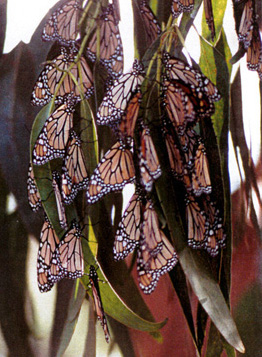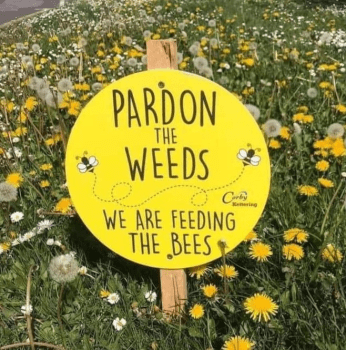
In December 2013, one of our collaborators in the effort to save our urban forest from pointless destruction submitted a request to the California Invasive Plant Council to reconsider its evaluation of blue gum eucalyptus (Eucalyptus globulus) as “moderately invasive.”
The California Invasive Plant Council (Cal-IPC) has responded to that request with a draft reassessment which is available here: http://www.cal-ipc.org/ip/inventory/eucalyptus.php. Cal-IPC’s draft maintains the same over-all rating of blue gum as “moderately invasive.” Cal-IPC is inviting “substantive comments and questions” by July 31st to info@cal-ipc.org.
Today we are publishing with permission the cover letter of a public comment that will be submitted by one of our collaborators. We hope it will inspire you to write your own public comment by the deadline of July 31, 2014.
From the perspective of humans, there are pros and cons to most species of plant and animal. E. globulus is no exception to this general rule. Cal-IPC reaches a negative conclusion regarding blue gum by exaggerating negative issues and de-emphasizing or omitting positive issues. Cal-IPC now acknowledges that blue gum has “low invasive potential” only in specific conditions and that its population in California is stable, but it has introduced new issues and intensified others so that it can maintain its overall rating of “moderately invasive.” I remind Cal-IPC that its name is Invasive Plant Council, not fire council or hydrology council.
Cal-IPC also fails to take into consideration the negative side-effects of attempting to eradicate eucalyptus. There are environmental benefits associated with leaving blue gums alone. These damaging consequences of eucalyptus removal should appear on the “asset” side of the ledger:
- When eucalypts are destroyed, repeated applications of herbicide to stumps are required to kill the roots of the trees to prevent them from resprouting multiple trunks. If the resprouts are not aggressively managed, the result will be more eucalypts than presently exist, which has been the result of some past projects.
- The herbicides used to kill the roots (usually Garlon) are known to damage mycorrhizal fungi and microbes in the soil. Therefore, the growth of whatever plant succeeds the eucalypts is hindered by the damage that is done to the soil.
- Because many of the herbicides used to kill non-native vegetation are mobile in the soil or are taken up by the roots of the plants that remain, plants and trees, which are not intended targets, are often damaged or killed.
- Existing eucalypts are often sheltering plants and trees that are considered valuable by Cal-IPC. When the eucalypts are destroyed, the plants that remain are subjected to increased light and wind, which sometimes damages or kills the remaining plants.
- Eucalypts are storing many millions of tons of carbon, which are released into the atmosphere when the trees are destroyed, contributing to the greenhouse gases causing climate change. Scientists tell us that the native ranges of plants and animals have changed in response to climate change and must continue to change. Therefore, Cal-IPC’s interest in preserving native plants in their historic ranges is not served by contributing to climate change.
It is also not in Cal-IPC’s strategic best interests to continue to advocate for the eradication of eucalyptus in California:
- As the eradication projects get progressively more destructive, the public’s negative reaction to the destruction becomes progressively more aggressive. There are now thousands of us all over the State and all over the country, working to stop this destruction and we are often effective in preventing these projects from being approved or funded. An op-ed in the New York Times in September 2013, expressed support for our opinion that the word “invasive” has become a destructive tool and is inappropriately applied to eucalyptus in California.
- The scientific community has also become progressively more critical of the attempts to eradicate eucalyptus. Last fall, Nature magazine quoted several well-known academic scientists in an article that criticized plans to destroy 30,000 eucalypts on Mount Sutro in San Francisco. In May 2014, the CEO and Chief Scientist of the Nature Conservancy expressed their opinion on TNC’s website that destroying eucalypts in California is unnecessary.
- Since blue gum eucalyptus is no longer available in nurseries in California and has not been planted for many decades, it has no long-term future in California. To the extent that eucalyptus is a problem, it is a problem that will resolve itself in time.
Cal-IPC’s continued support for these projects is no longer in the mainstream of scientific or public opinion. Removing eucalyptus from Cal-IPC’s “hit list” would significantly improve Cal-IPCs chances of success with the plants that remain on its inventory of invasive plants. The public is unlikely to expend the same amount of energy opposing the eradication of broom, for example.
Cal-IPC has an opportunity to defuse a controversy that is handicapping the success of its venture. Cal-IPC would be wise to abandon its crusade aganst blue gum eucalyptus.
Update: On March 13, 2015, the California Invasive Plant Council published its final reassessment of Blue Gum Eucalyptus (available HERE). Cal-IPC has downgraded its rating of invasiveness and ecological impact from “moderate” to “limited.” Although the detailed assessment is less than perfect, the over all rating itself is an improvement. Thanks to those who sent comments to Cal-IPC.

clearly these people are in league with the pesticide industry.
Maybe. It seems equally likely that they are ignorant of the pesticides that are needed to kill all the non-native trees and vegetation they don’t like. When faced with a choice between malfeasance and incompetence, the latter is usually the more likely explanation, IMO.
in Mariposa Road and Chasing Monarchs, Robert Michael Pyle describes some of the other wildlife adaptations to the euc groves,besides the monarchs
which are substantial–western gray squirrels, r/b nuthatches, c/b chickadees, etc.) The Eucs “are not the biological barrens they are often portrayed to be. “
Thanks, Fritzi. I’ll try to chase that book down, BUT it would be even better if YOU would quote it in YOUR public comment. Thanks for any help you can give.
If anyone really cares they can learn about how much the magnificent Blue Gum Eucalyptus are helping our native wildlife, helping to prevent fires with precipitating many inches of water from fog each year and creating windbreaks, etc.
Last week, for the first time in our urban neighborhood, we saw a Red Shoulder Hawk fledgling. They are far more unusual to see than common Red Tails. And the only reason that nest and young hawk is in this area is because of a small stand of Eucalyptus, which is their and Great Horned Owls’ and other raptors’ preferred nesting trees. The Eucalyptus height protects them, makes it easier to hunt, and their openness makes it less likely the young raptors will die when learning to fly. (I believe the Eucalyptus provide an excellent substitute for the native California Sycamore which has similar characteristics in light bark, height, and open branch structure, but a far more limited and vulnerable range since they are dependent on growing in and next to creeks, which are drying up in the Bay Area.)
These beautiful Eucalyptus trees house and feed so many of our most beloved animals, including hummingbirds.
Thank you so much for this post.
Stephen Rottenborn studied the nesting choices and reproductive success of red-shouldered hawks in Santa Clara County. He found that the hawks prefer eucalypts to native trees and that their nests were more successful when they made that choice. He attributes that greater success rate to the fact that eucalypts are “large, sturdy trees” that provide “greater stability and protective cover.”
“Fourteen of 27 nests in 1994 and 38 of 58 nests in 1995 were in exotic trees, predominantly eucalyptus. Nesting and fledging success were higher in exotic trees than in native trees in both years, owing in part to greater stability and protective cover. Most nest trees in upland areas were exotics, and even in riparian habitats, where tall native cottonwoods and sycamores were available, Red-shouldered Hawks selected eucalyptus more often than expected based on their availability. Of the habitat and nest-tree variables measured at each nest, only nest-tree height and diameter were significantly associated with reproductive success, suggesting that large, sturdy trees provided the best nest sites. Red-shouldered Hawk populations in the study area have likely benefited from the planting of exotic eucalyptus and fan palms.”
That’s wonderful. The humans who want to kill trees should pay attention to what the native animals can teach them, before it’s too late.
I don’t agree with Pesticide useage, but, native California perennial grass lands capture and store more carbon from our atmosphere than eucalyptus trees do… Maybe you could spend more time focusing on the destruction of virgin native forests such as those in Oregon and elsewhere.
You are mistaken in your belief that perennial grasses store more carbon than trees because carbon storage is largely proportional to biomass. Eucalyptus is a particularly dense hardwood tree, which stores more carbon than other trees of comparable size. Please read these articles about carbon storage:
https://milliontrees.me/2011/06/16/facts-about-carbon-storage-do-not-support-assumptions-of-native-plant-advocates/
https://milliontrees.me/2013/05/16/carbon-storage-in-our-urban-forest/
Because we live in the San Francisco Bay Area, that area is the focus of our inquiries. We have first-hand knowledge of the projects here and so we can be more confident of the accuracy of our reports.